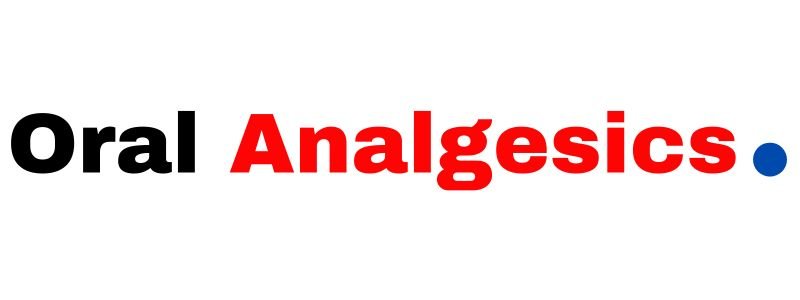What Natural Alternatives Are There To OTC And Prescriptions For Oral Analgesics?
Have you ever wondered if there are natural alternatives to over-the-counter (OTC) and prescription oral painkillers? Pain relief is a common concern for many, but not everyone wants to rely on medications that may have side effects or interactions.
In this article, we explore some natural options that you can consider for managing oral pain, without the need for traditional analgesics. Whether you’re looking for relief from toothaches, gum inflammation, or other oral discomforts, we’ve got you covered with these natural alternatives.
So let’s dive into the world of herbal remedies, homeopathic treatments, and other holistic approaches that may provide the relief you’re looking for.
Topical analgesics
Capsaicin
Capsaicin is a natural compound found in chili peppers that has been used for centuries for its pain-relieving properties. When applied topically, capsaicin blocks the transmission of pain signals to the brain, providing temporary relief from pain and inflammation. You can find capsaicin in the form of creams or ointments that are readily available over the counter. When using capsaicin products, it is important to follow the recommended guidelines to avoid skin irritation.
Arnica gel or cream
Derived from the Arnica montana plant, arnica gel or cream is another popular topical analgesic. It has anti-inflammatory properties that can help reduce pain, swelling, and bruising. Arnica can be applied directly to the affected area and gently massaged in. It is commonly used for muscle aches, sprains, and bruises. However, arnica should not be used on broken or irritated skin.
Turmeric cream
Turmeric, a vibrant yellow spice commonly found in curry dishes, is known for its anti-inflammatory properties. When made into a cream or ointment, turmeric can be applied topically to alleviate pain and swelling. The active compound in turmeric, called curcumin, has been shown to inhibit the production of inflammatory chemicals in the body. Turmeric cream can be found in health food stores or can be made at home using turmeric powder and a carrier oil, such as coconut oil.
Lavender essential oil
Lavender essential oil is not only known for its soothing aroma but also for its potential pain-relieving properties. When applied topically, lavender oil can help relax sore muscles, reduce inflammation, and promote a sense of calm. Lavender oil can be diluted with a carrier oil, such as almond or jojoba oil, and gently massaged into the skin. It is important to note that essential oils should never be applied directly to the skin without proper dilution.
Herbal remedies
White willow bark
White willow bark has been used for centuries as a natural pain reliever. It contains a compound called salicin, which has similar properties to aspirin. Salicin is converted to salicylic acid in the body, providing pain relief and reducing inflammation. White willow bark is available in various forms, including capsules, powders, and teas.
Devil’s claw
Devil’s claw is a medicinal plant native to Southern Africa and is commonly used to treat pain and inflammation. Its active compounds, called harpagosides, have been shown to have analgesic and anti-inflammatory effects. Devil’s claw is available in supplement form or as a dried herb that can be brewed into a tea.
Boswellia
Boswellia, also known as frankincense, is an herbal extract derived from the Boswellia serrata tree. It has been used for centuries in traditional medicine for its anti-inflammatory properties. Boswellia works by inhibiting the production of inflammatory compounds in the body, providing relief from pain and inflammation. It is available in capsule or tablet form.
Ginger
Ginger, a common spice, has been used for centuries for its medicinal properties. It has anti-inflammatory effects that can help relieve pain associated with various conditions, such as arthritis and muscle soreness. Ginger can be consumed in various forms, including fresh, powdered, or as a supplement.
Supplements
Glucosamine and chondroitin
Glucosamine and chondroitin are two supplements commonly used for joint pain and osteoarthritis. They are naturally occurring substances in the body that help build and maintain cartilage. Supplementing with glucosamine and chondroitin can support joint health and potentially reduce pain and inflammation.
Omega-3 fatty acids
Omega-3 fatty acids are essential fats that provide numerous health benefits, including reducing inflammation throughout the body. They can be found in fatty fish, such as salmon and mackerel, as well as in flaxseeds and chia seeds. Omega-3 supplements are also available for those who may have difficulty incorporating these foods into their diet.
Vitamin D
Vitamin D is a crucial nutrient that plays a role in bone health and immune function. Low levels of vitamin D have been associated with chronic pain and inflammation. Ensuring adequate vitamin D intake through sunlight exposure or supplementation may help reduce pain and improve overall well-being.
Acupuncture
Traditional acupuncture
Traditional acupuncture is an ancient Chinese practice that involves inserting thin needles into specific points on the body to stimulate energy flow and restore balance. It is believed to help relieve pain by promoting the release of endorphins, the body’s natural painkillers. Traditional acupuncture is often used for various types of pain, including chronic pain conditions.
Electroacupuncture
Electroacupuncture is a modern variation of traditional acupuncture that involves the use of small electric currents applied to the acupuncture needles. This technique is thought to enhance the effectiveness of acupuncture in pain relief. Electroacupuncture is commonly used for musculoskeletal pain and can be particularly beneficial for conditions such as fibromyalgia.
Auricular acupuncture
Auricular acupuncture, also known as ear acupuncture, focuses on specific points in the ear that are believed to correspond to different parts of the body. By stimulating these points, auricular acupuncture can help alleviate pain and promote overall well-being. It is often used as an adjunct therapy alongside traditional acupuncture or as a standalone treatment for pain management.
Physical therapy
Stretching exercises
Stretching exercises are an essential component of physical therapy for pain management. They help improve flexibility, reduce muscle tension, and increase range of motion. Stretching exercises target specific muscle groups and can be tailored to individual needs and areas of pain.
Strengthening exercises
Strengthening exercises are designed to build muscle strength and endurance, which can provide support and stability to the affected area. By strengthening the muscles surrounding a painful joint or muscle group, the load can be better distributed, reducing pain and improving function.
Hot or cold therapy
Hot or cold therapy involves the application of heat or cold to the affected area to alleviate pain and inflammation. Heat therapy, such as using hot packs or taking warm showers, can help relax muscles, increase blood flow, and promote healing. Cold therapy, on the other hand, can help reduce swelling and numb pain. This can be done by applying ice packs or using cold compresses.
Mind-body techniques
Meditation
Meditation is a practice that involves focusing the mind and achieving a state of deep relaxation. It has been shown to have numerous health benefits, including pain management. By training the mind to focus and redirect attention away from pain, meditation can help reduce pain perception and improve overall well-being.
Yoga
Yoga combines physical postures, breathing exercises, and meditation to improve flexibility, strength, and mental well-being. It is often used as a complementary therapy for pain management. Certain yoga poses and sequences can target specific areas of pain and promote relaxation, helping to reduce pain symptoms.
Deep breathing exercises
Deep breathing exercises, also known as diaphragmatic breathing, involve taking slow, deep breaths from the diaphragm. This type of breathing can help activate the body’s relaxation response, reducing stress and tension. Deep breathing exercises can be done on their own or combined with other relaxation techniques for pain relief.
Chiropractic care
Spinal manipulation
Spinal manipulation, also known as chiropractic adjustment, is a technique used by chiropractors to relieve pain and improve joint function. It involves applying controlled force to specific joints in the spine or other areas of the body. Spinal manipulation aims to restore proper alignment and mobility, reducing pain and improving overall musculoskeletal health.
Massage therapy
Massage therapy offers a hands-on approach to pain management and relaxation. It involves the manipulation of soft tissues, such as muscles and connective tissues, to promote pain relief and reduce muscle tension. Massage therapy can be tailored to target specific areas of pain or used as a full-body treatment for relaxation and overall well-being.
Trigger point therapy
Trigger points are localized areas of pain and muscle tightness that can contribute to chronic pain conditions. Trigger point therapy involves applying pressure to these specific points to alleviate pain, release muscle tension, and improve range of motion. It can be done manually by a chiropractor or using tools designed for trigger point release.
Dietary changes
Anti-inflammatory diet
An anti-inflammatory diet focuses on consuming foods that help reduce inflammation in the body. This includes foods rich in antioxidants, such as fruits, vegetables, and whole grains, as well as healthy fats from sources like olive oil and nuts. Minimizing processed foods, refined sugars, and saturated fats can also contribute to an anti-inflammatory diet.
Omega-3 rich foods
Incorporating foods rich in omega-3 fatty acids into your diet can contribute to pain management. As mentioned earlier, omega-3 fatty acids have anti-inflammatory properties that can help reduce pain and inflammation. Fatty fish like salmon, mackerel, and sardines are excellent sources of omega-3s. Vegetarian options include flaxseeds, chia seeds, and walnuts.
Turmeric and ginger
Both turmeric and ginger have been mentioned earlier for their anti-inflammatory properties. Including these spices in your diet can provide additional pain-relieving benefits. Turmeric can be added to curries, soups, or smoothies, while ginger can be used in stir-fries, teas, or baked goods. Using fresh or powdered forms can provide the most benefit.
Hydrotherapy
Hot water therapy
Hot water therapy, also known as hydrotherapy, involves immersing the body in warm water to promote pain relief and relaxation. The warmth helps to increase blood flow, relax muscles, and reduce stiffness. Various forms of hot water therapy can be used, such as soaking in a hot bath, using hot tubs, or receiving hydrotherapy treatments.
Cold water therapy
Cold water therapy, also known as cryotherapy, involves exposing the body to cold temperatures to reduce pain and inflammation. This can be achieved through cold showers, ice baths, or the application of cold packs or ice packs to the affected area. Cold water therapy can be particularly beneficial for acute injuries or inflammatory conditions.
Contrast hydrotherapy
Contrast hydrotherapy involves alternating between hot and cold water therapy to maximize pain relief and promote healing. The contrast of temperatures helps to stimulate circulation and reduce inflammation. This can be done by alternating between hot and cold showers, or by using hot and cold packs on the affected area.
TENS therapy
Transcutaneous electrical nerve stimulation
Transcutaneous electrical nerve stimulation (TENS) therapy involves the use of a small battery-operated device that delivers low-level electrical currents to the skin via electrodes. These currents stimulate the nerves and help block pain signals from reaching the brain. TENS therapy can be used for various types of pain, such as back pain, joint pain, and even chronic conditions like fibromyalgia.
Pulsed electromagnetic field therapy
Pulsed electromagnetic field (PEMF) therapy utilizes electromagnetic fields to stimulate tissues and promote healing. It involves using a device that emits pulsed electromagnetic waves to the affected area. PEMF therapy has been found to reduce pain, inflammation, and promote tissue repair. It can be used for a wide range of conditions, including musculoskeletal pain and osteoarthritis.
In conclusion, natural alternatives to oral analgesics exist in various forms, such as topical analgesics, herbal remedies, supplements, acupuncture, physical therapy, mind-body techniques, chiropractic care, dietary changes, hydrotherapy, and TENS therapy. Each of these approaches offers unique benefits and can be tailored to individual needs and preferences. It is important to consult with a healthcare professional before starting any new treatment regimen, especially if you have underlying health conditions or are currently taking medications. With the right combination of natural alternatives, you can find relief from pain and improve your overall well-being.




